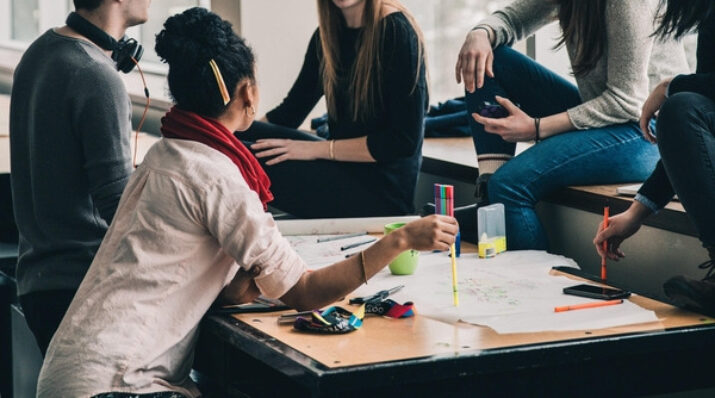New Designs for School
Flexible Seating, Flexible Teachers
Topics

We’ve all had the experience of truly purposeful, authentic learning and know how valuable it is. Educators are taking the best of what we know about learning, student support, effective instruction, and interpersonal skill-building to completely reimagine schools so that students experience that kind of purposeful learning all day, every day.
Research links flexible seating in the classroom to improved student behavior, increased engagement, and better health. So I dove right in.
How do you trust seven-year-olds to pick their own seat? Where do the kids put their stuff? Where do you find the money to makeover your classroom?
These are just a few of the questions that I frequently get when people see my classroom. I adopted a flexible seating policy about four years ago when I saw Kayla Delzer (@TopDogTeaching) and Erin Klein (@Kleinspiration) share the changes to their classrooms on Twitter. My first thought was “why?” And that’s where I started. After lots of research, I discovered that flexible seating is linked to improved behavior, increased engagement and better health. So I dove right in.
The year I got rid of my desk was the year my mindset began to shift.
As I looked at what children needed to learn and got feedback from the kids, they realized they didn’t need a desk to store things. After all, desks usually become the place where things are forgotten. The kids spoke of needing comfortable places to collaborate and create. We started using community supplies and repurposing the furniture we had. In the first year of flexible seating, I cleaned off my desk for kids to use as a work space. The following year, my desk had to go because it took up too much potential student work space. One of my mentors, Scott Fuller, used to call those spaces “teacher forts.” Teachers complain a lot about small rooms (I’m guilty as well), but then one-quarter of the space is taken up by “teacher things.” The year I got rid of my desk was the year my mindset began to shift.
We used cubbies to store writing and math journals and said goodbye to workbooks and worksheets (an entirely separate post). I also realized flexible seating really didn’t require a lot of money. We didn’t need anything fancy. I learned to start looking at furniture in a different way. I took an old coffee table from my house that had a glass insert, went to Home Depot and had them cut a whiteboard the same size to fit the middle of the table. I found a friend willing to donate a tall two-person table with two stools and painted it to match my classroom. I took the legs off a trapezoid table and placed pillows on the floor around it. We invested in a lot of clipboards. A colleague took the legs off desks and then covered them in foam and fabric to make a low seat for her kids. I even had a colleague suggest bringing in an old ironing board to use as a standing table!
When we open our eyes and really look around and stop making excuses, we find what we need. Asking a few people for resources or help, really pays off.
As my District (@CSSD11) continues to embark on the next generation journey, other educators often ask me, “where do I even start?” I honestly believe the journey starts with flexible seating and an equally flexible mindset. I hope the questions you now have are: What resources do I have around me to help me start this journey? How excited will my kids be to see their new seating options? How will the learning change? And what will collaboration and creativity look like now in my classroom?




